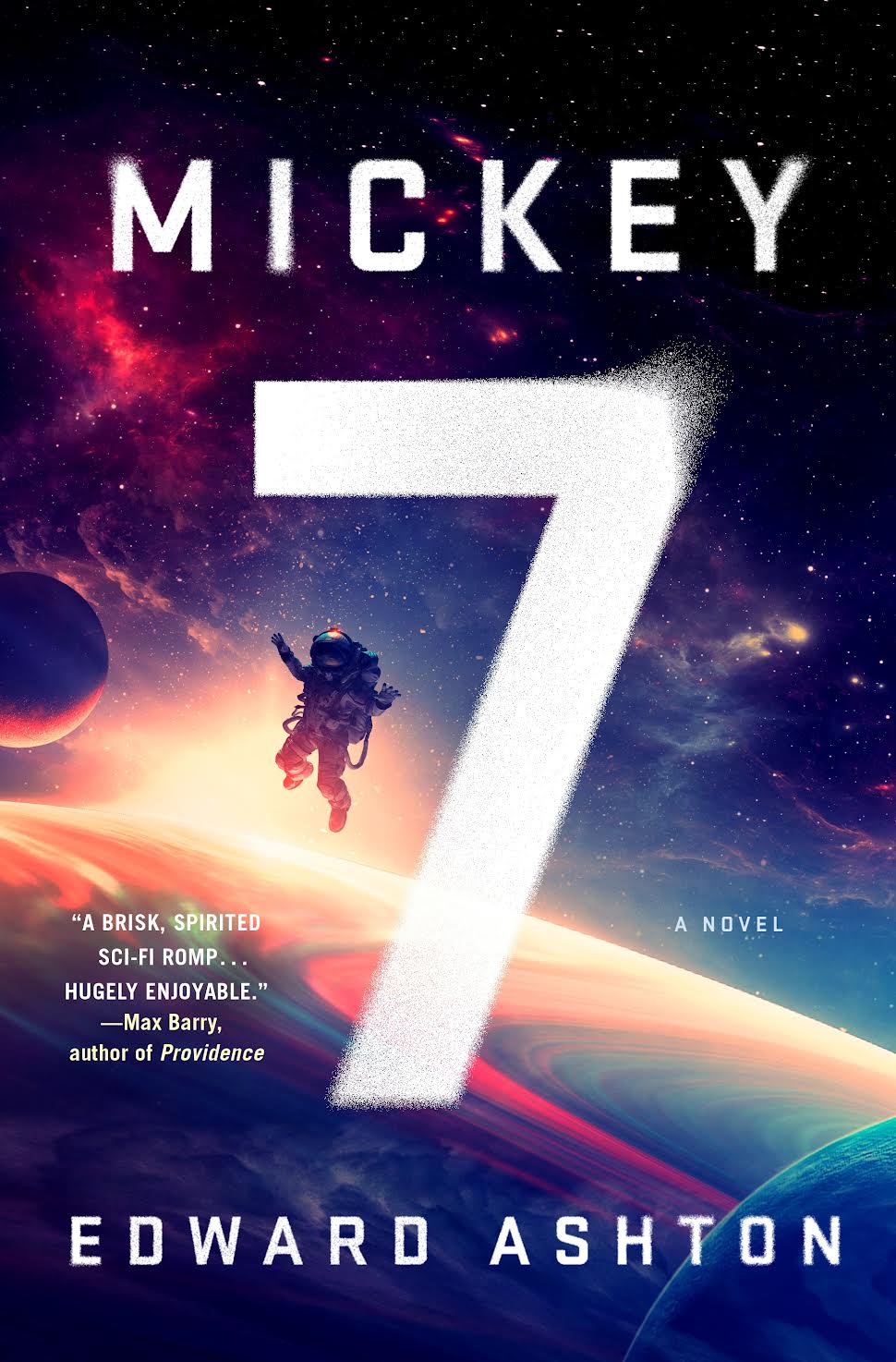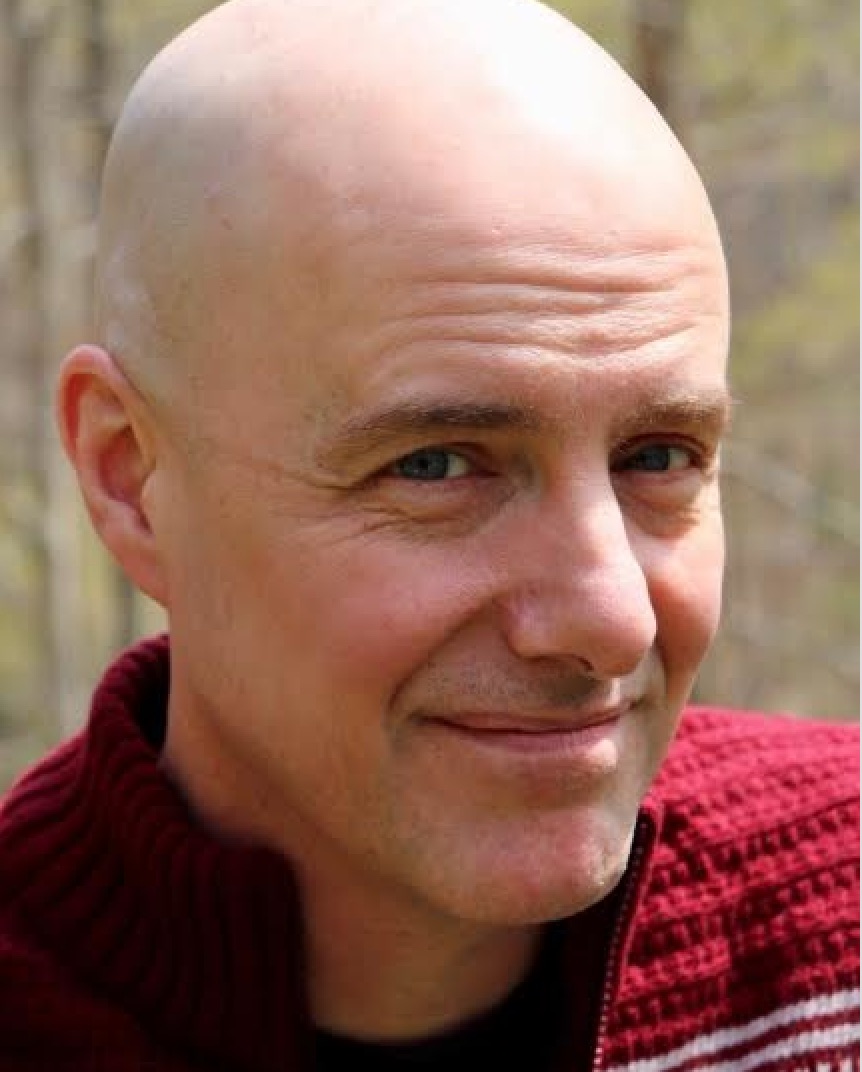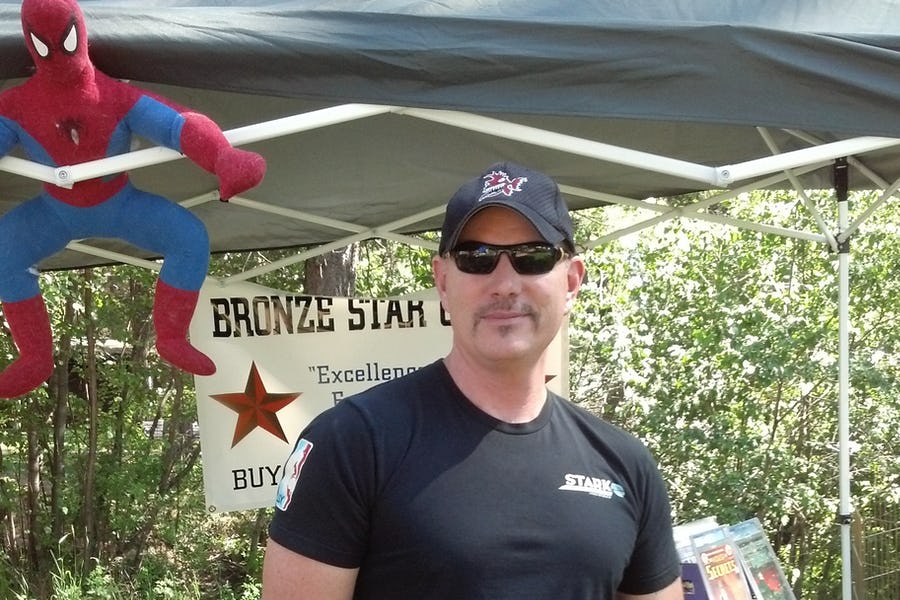
Existential themes of identity and immortality are carefully explored in Edward Ashton’s engaging new sci-fi novel "Mickey7" (St. Martin’s Press, 2022), a witty book filled with a refreshing dose of clever humor and old-fashioned planetary adventure.
Billed as "The Martian" meets "Multiplicity" (with a touch of Duncan Jones' "Moon"), "Mickey7" introduces readers to an Expendable human worker drone named Mickey who is tasked with carrying out dangerous tasks on the frozen world of Niflheim. These disposable employees are subject to a variety of ignoble deaths before they’re regenerated as clones, complete with their original memories intact.
When Mickey7 gets swallowed up in a vast icy crevasse, he's presumed dead and a new Expendable, Mickey8, is created to take his place in the system. But Mickey7 is miraculously saved by one of the planet's indigenous aliens, and when he returns to the colony base, he's shocked to see the replacement drone already inserted into his old life and habitat.
Now Mickey7 and Mickey8 must hide their dual existences from a corporation that frowns on repetition as the bug-like native creatures grow restless in the frigid, hostile environment and a cross-species conflict brews that threatens both sides.
Related: The best space and sci-fi books for 2022

Deadline recently reported that Academy Award-winning director Bong Joon Ho ("Snowpiercer," "Parasite") has signed on to the Warner Bros. adaptation for Brad Pitt’s Plan B Entertainment, with Robert Pattinson ("The Batman") attached in the lead role .
Space.com spoke with Ashton on what story elements he hoped to inject in "Mickey7," his good fortune regarding Hollywood's upcoming feature film version starring Pattinson, and how a quirky children's cartoon helped shape the alien creatures that inhabit the novel's colonized ice planet.
Get the Space.com Newsletter
Breaking space news, the latest updates on rocket launches, skywatching events and more!
Space.com: What was the genesis of "Mickey7," and why was this story essential to tell?
Edward Ashton: This book came about in certain stages. I wrote a short story a number of years ago that explored the idea of saving your consciousness and after you're killed, be regenerated, and in that way have a sort of crappy immortality as I describe it in "Mickey7." That was set in more of a contemporary Earth setting, so I liked the idea and wanted to see how that could be expanded if you coupled it with an exploitative social structure where people who are able to do this are basically used as crash test dummies for the rest of humanity. Mickey comes from a lower class background, and everyone else on the mission is the elite of their society, and he’s the one who has to do every dirty job and die for them over and over again.
Space.com: What were some surprising research paths you stumbled across in your writing process?
Ashton: There is a fair amount of science that goes into this book. I'm definitely more on the hard sci-fi side of things. I'm a scientist myself, and I like to make sure everything I put into my books is at least plausible. I teach quantum physics, so I sort of understood most of this stuff, but I had to do some digging to make sure I got the details right. Like what goes on in the interstellar medium, and what's the distribution of macro objects in the interstellar medium. Those are things that we don't have a super hard grip on, but we do have some ideas about it.
Space.com: How do you balance the novel's hard and soft science to be attractive to the broadest readership?
Ashton: I myself have my feet in both worlds. I started out writing contemporary fiction before I started working on science fiction, but I've always been a fan of sci-fi going back to when I was a kid. I was taught to make sure that the heart of the story is the characters and their interactions and not focus too hard on the science. A lot of science fiction starts with wanting to tell a story about a great technical idea and then put some cardboard characters around this idea to illustrate it. If you're a fan of that stuff it can be really fun, but if you're not then that kind of book can be somewhere between boring and impenetrable. I try not to go down that road.
Related: The best space movies of all time

Space.com: Did you have fun writing this book and delivering your amusing cocktail of humor and sci-fi thrills?
Ashton: I hear people talk about how writing is such a struggle. If writing were painful or difficult, I wouldn't do it. I have other things I can do with my life that are pleasant. I love writing, and I had a ton of fun writing this book. I made myself giggle and made myself cry once or twice. The tone I wanted to strike with it was as if you were sitting at a bar and Mickey is telling you this story.
Space.com: What was your gateway into science fiction growing up?
Ashton: I was a voracious reader as a kid. Some of my favorite books that I reread are ones I read many years ago. George R.R. Martin had a series of books set in a universe that’s not super dissimilar from "Mickey 7," long before "A Song of Ice and Fire," of course. "Dying of the Light" is the best of them. "Tuf Voyaging" is another one that's absolutely fantastic. I think I read everything Clifford D. Simak ever wrote before I was 15 years old. In particular, he had a really short but incredibly punchy book called "Shakespeare’s Planet" that I read when I was 11 or 12, and it has never left me. I've given copies of it to all my kids. It's required reading in the family. Later on, I became a great admirer of David Brin, especially his earlier stuff.
Space.com: How did you come up with the planet’s insectoid aliens called Creepers?
Ashton: This is slightly embarrassing, but the origin for the Creepers and their physical presence was an episode of a cartoon called "Steven Universe" that my kids used to watch. There was this giant centipede-like creature with multiple mandibles, and I thought I had to do something with that.
Space.com: Bong Joon Ho has picked "Mickey7" for his next film, with Robert Pattinson attached. What was your reaction to that news, and will you be involved?
Ashton: It's been absolutely crazy these past few days, but I've had time to think about it more than most people. Plan B, Brad Pitt's production company, optioned the manuscript before I even sold the U.S. rights back in 2020. I had a call with director Bong about a year ago because they were really interested in having him work with us. We talked about the manuscript, so I already knew he was interested.
But the announcement that just came out, where they confirmed that he's on board and Robert Pattinson is on board, I found out because my agent texted me the press release. There has been radio silence on this for over a year. I knew the option was coming up on expiration, but I expected that they'd say they decided to not do anything with it. 99% of the time when you option a property, that's what occurs. But that's not what happened here.
Officially I am an executive producer, but my belief is that probably that's entirely a symbolic title. Director Bong does his own thing, and he's writing the script. He asked for my input on a few things early on. Like some details I had not considered when I was writing the book, such as, How do Creepers reproduce? That was a great question, and we talked it through.
A lot of people have asked if I'm nervous since he has a reputation for diverting from the source material. My answer was absolutely not. That man is a genius. I've seen all of his films, and he’s never made a bad one. I don’t think he’s going to start with "Mickey 7." He’ll do a fantastic job.
Edward Ashton’s "Mickey7" is available now at bookstores and major online outlets.
Follow us on Twitter @Spacedotcom and on Facebook.
Join our Space Forums to keep talking space on the latest missions, night sky and more! And if you have a news tip, correction or comment, let us know at: community@space.com.

Jeff Spry is an award-winning screenwriter and veteran freelance journalist covering TV, movies, video games, books, and comics. His work has appeared at SYFY Wire, Inverse, Collider, Bleeding Cool and elsewhere. Jeff lives in beautiful Bend, Oregon amid the ponderosa pines, classic muscle cars, a crypt of collector horror comics, and two loyal English Setters.









